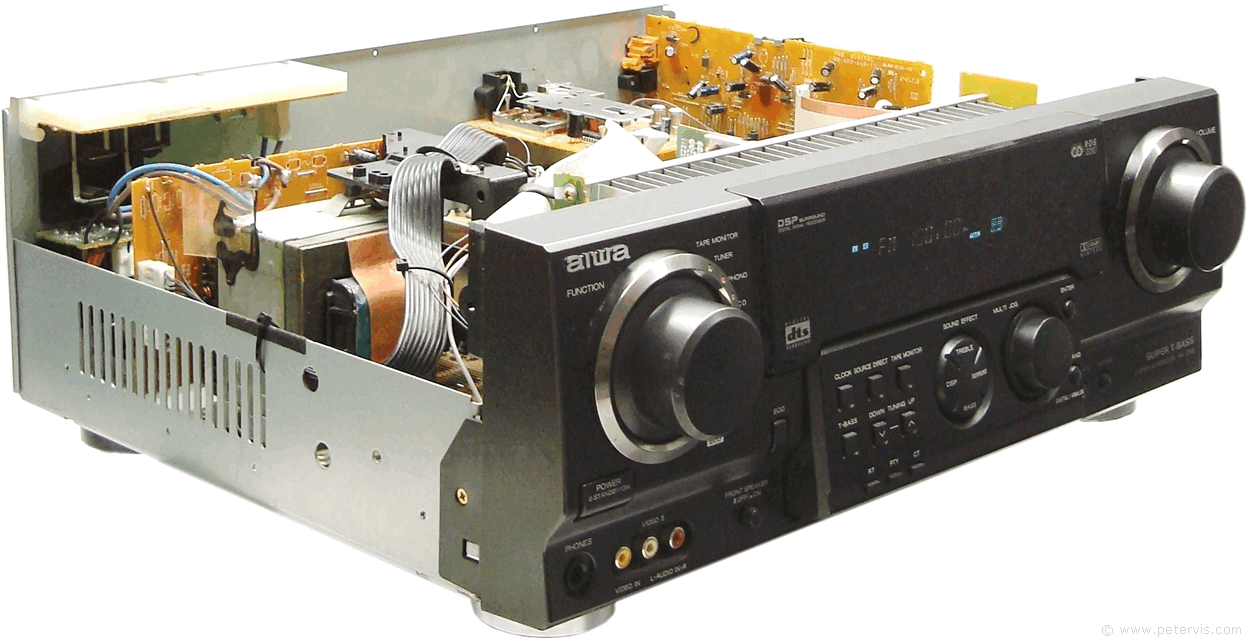Aiwa AV-D58 Repair – No Sound Problem
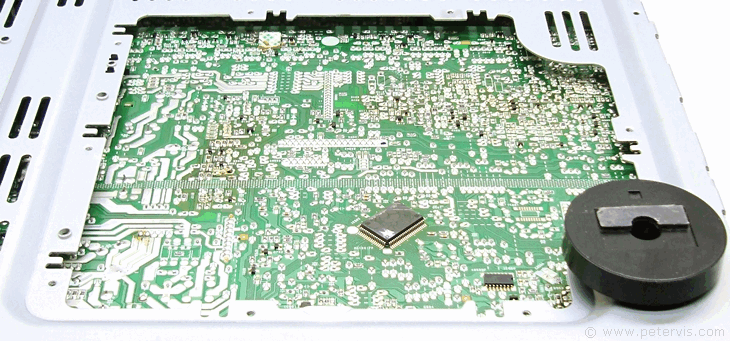
Repairing the AV-D58 no sound problem is a simple task for an experienced and qualified engineer following a very logical and methodical approach. Hobbyists that are neither qualified nor experienced should not carry out such repairs, as they are likely to introduce more faults than solve any. This lovely unit had a strange fault, which was the lack of audio from any of the speakers. There were no warning messages to indicate that the unit was going into protect mode. It was switching ON fine and I was able to select the inputs using the front knob. I tested all the analogue inputs by feeding a signal through them and there was no audio from the headphones or the main speakers. I also tested the digital inputs, which go through the digital board instead, and again, there was no sound. Since it was not going into protect mode, I had eliminated the possibility that the audio power output transistors may need checking.
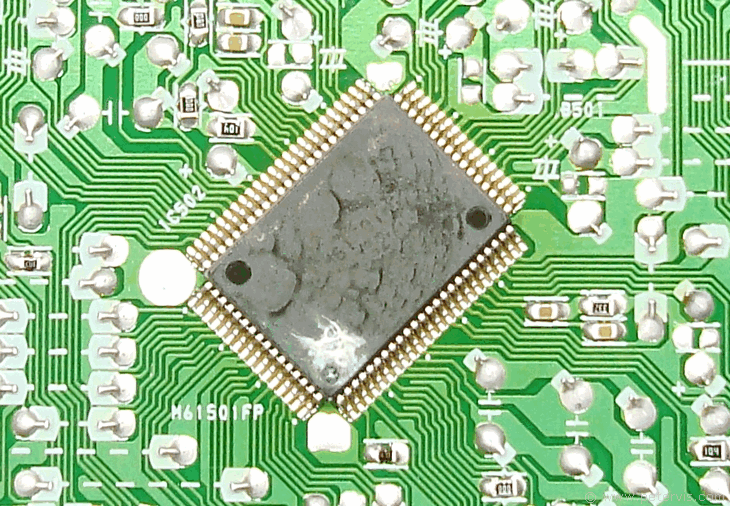
Most modern amplifiers usually have an audio switch IC that performs the switching so this was the logical place to start. Studying the service manual, I noticed that there were no switching ICs, and all the inputs converged into IC502 (M61501FP), which was a sound processor IC by the Mitsubishi Corporation. It has built-in 7-input selector switch, and takes 5.1 channel input from the digital board. It manages the volume, bass, and treble for each channel. This is one of those huge square surface-mount ICs with pins on all four sides. They usually mount this on the trackside of the main board; therefore, one would have to gain access to the underside of the main board to take voltage measurements.

Studying the documentation of the M61501FP IC and the pinout, the first logical voltage measurements I wanted to make was to determine if the IC was getting power. In this IC, AVDD, and AVSS are the pins for supplying voltage to its analogue subsystems. The documentation for this IC indicates that it usually operates on a split-rail voltage system of ±7.8 V, hence I would expect something in that region. AVSS at pin 29 receives the negative voltage, whilst AVDD at pins 72 and 73 receives the positive voltage. Unfortunately, the negative voltage was not present on the pin; hence, the investigation continued further to the circuit that produces it.
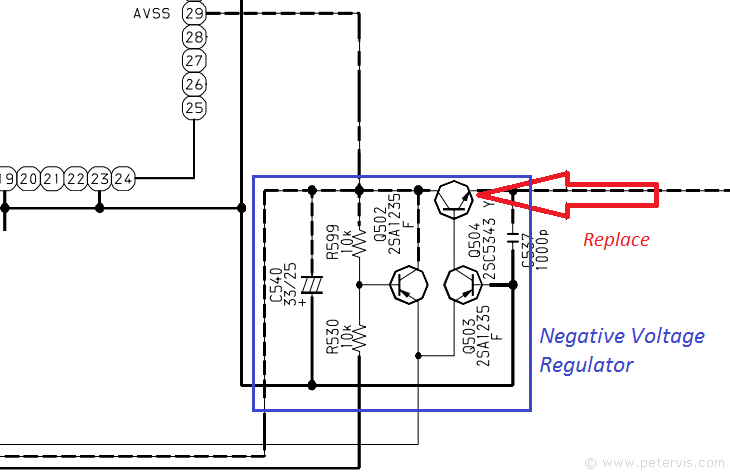
The trail led to a negative voltage regulator circuit consisting of Q504, Q503, and Q502. As you can see, the main link in this circuit is Q504 that carries the current, whilst the other two transistors behave as regulators. I managed to bend Q504 over (slightly), and measure the voltages at its terminals and found that there was voltage at the emitter, but nothing at the collector end, even though there was sufficient voltage at the base junction. This was the solid proof needed that transistor Q504 had failed and would need replacing. According to the service manual, Q504 is a 2SC5343 NPN transistor.
Looking on eBay, I found some sellers who had replacement 2SC5345 transistors, but the prices seemed too much for my pocket, so I decided to look in my recycled transistors bag to see if I already had one. After comparing the specs of many transistors, I found a 2SC3198 that had identical absolute maximum ratings. Further detailed comparisons indicated that it would be a good substitute, so I decided to use that. However when I removed the faulty Q504 from the PCB, guess what I found? It was a 2SC3198! Therefore, I checked the manual again to make sure, and sure enough, Q504 is stated to be a 2SC5343. Therefore, my impression is that these transistors may be good substitutes for each other. I therefore installed the recycled 2SC5343 and it repaired the fault, and the amplifier had sound again!
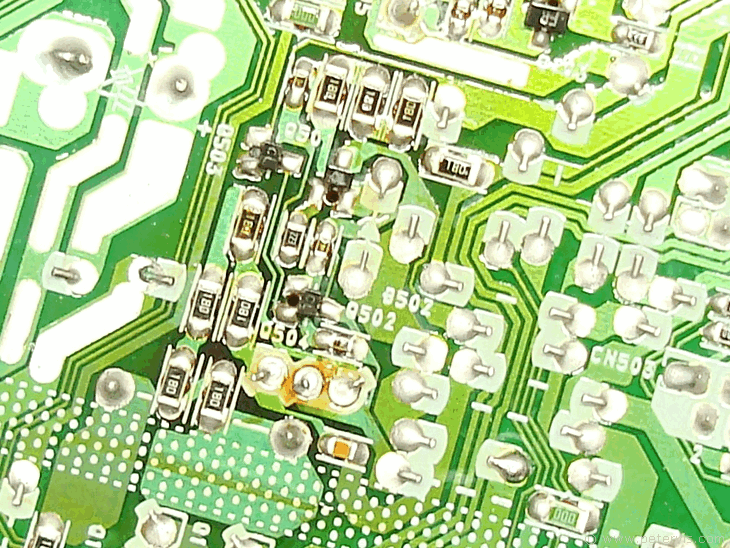
2SC5343 and 2SC3198 have maximum collector current rating (Ic) of just 150 mA, which does not seem much for supplying power to such a large IC such as the M61501FP. Perhaps a good modification would be to use a higher spec transistor with greater collector dissipation. I personally do not like the idea of mods and usually prefer to install exactly the same component that was originally there, keeping changes to a minimum. However, you can get tiny little heatsinks for transistors, so they dissipate the heat better, and that might help to increase its useful service life somewhat. Therefore, I decided to buy some of those and fit one, as it was a cheaper and less invasive alternative.
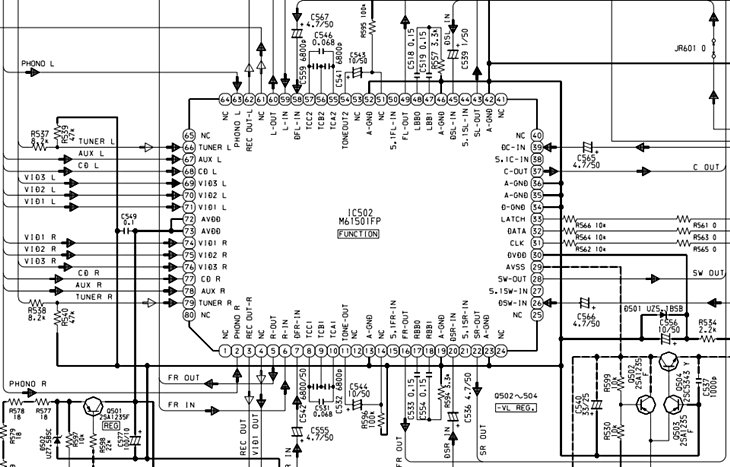
This Article Continues...
Aiwa AV-D58Inside View
Repair – No Sound Problem
Digital Board
Factory Reset
Remote control (RC-AAR02)
